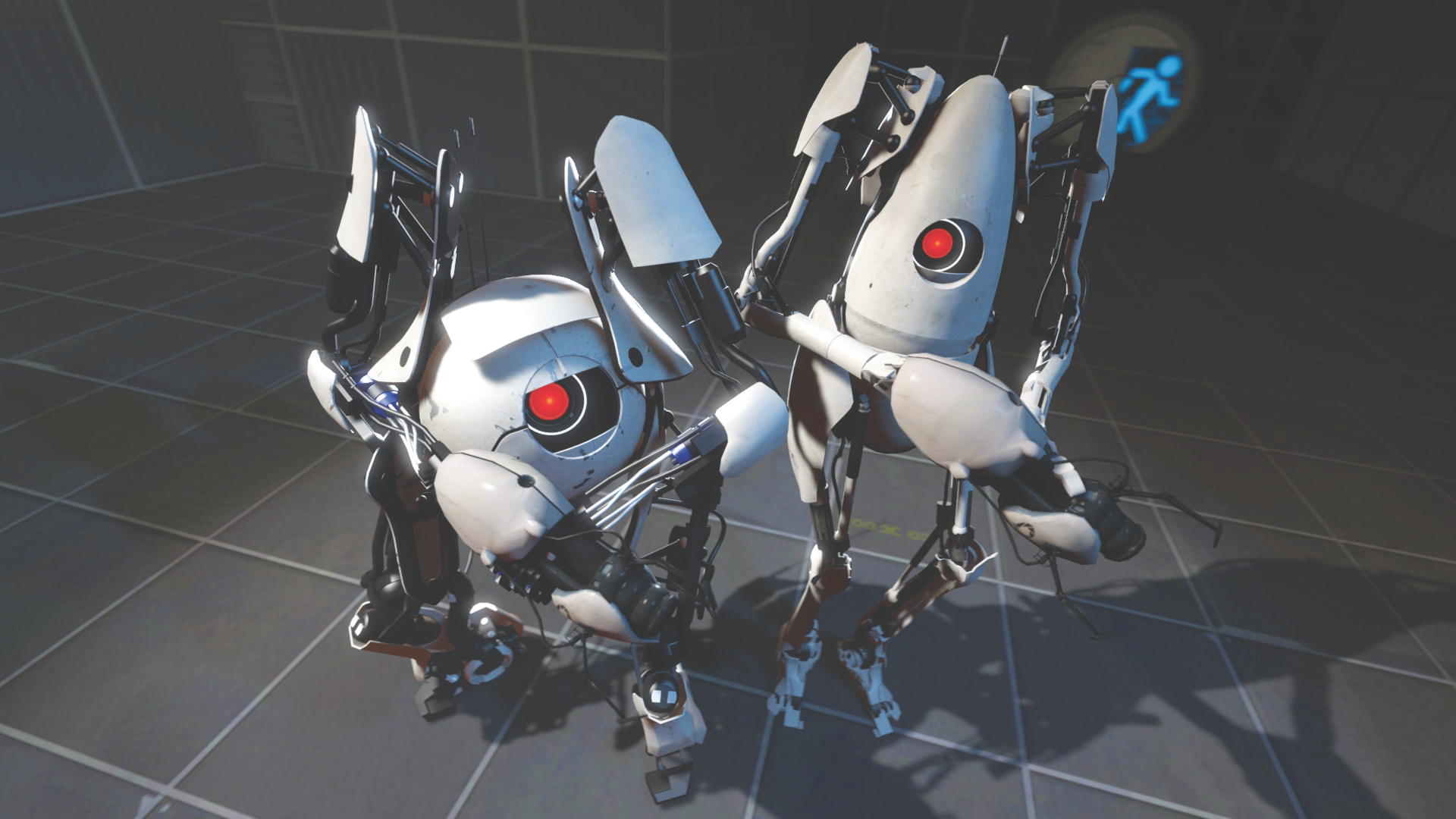Portal 2: How Valve used paint and personality to rip reality apart

How the hell do you follow what, at the time, was the best darn puzzle game ever made? That’s the dilemma Valve faced when it decided to make a sequel to Portal. Chell’s dimension-distorting debut adventure wasn’t just wonderfully scripted and effortlessly inventive, it was perfectly formed. You heard: perfect. Over to you, Gabe and co...
Does the much grander Portal 2 topple its illustrious predecessor? Not quite. Realistically, it never could. Yet while this splendidly clever follow-up can’t match the magnificent structural purity of the original, it doesn’t half throw some superb conundrums into the mix. Whether manipulating light tunnels, lasers or Edgeless Safety Cubes with gaming’s most invigorating science gun, or teaming up with a former nemesis whose personality now inhabits a Maris Piper, Portal 2 contains all the subversive smarts.

The core gameplay loop still revolves around escaping a series of test chambers by tearing holes in the fabric of space-time with the Aperture Science Handheld Portal Device. Or, y’know, Portal Gun. You fiddle with laser grids, tamper with moving platforms, refract light, disable turrets, and propel yourself with seriously clever paint. If Portal 2’s mission statement was to make the average gamer feel intelligent, it succeeds spectacularly.
That paint-gel we mentioned is undoubtedly the boldest new variable slathered onto Portal’s established canvas, and it has interesting indie origins, too. The concept was cooked up by a group of students from the DigiPen Institute of Technology, in a game called Tag: The Power Of Paint. After winning an award in 2009, the intrepid team was hired by Valve, whereby Tag’s core mechanic was translated into Portal’s 2’s momentum-changing, colourful goo.

Long before Nintendo’s Splatoon, Valve’s scientific paint proved that video game emulsion could be tons of fun to fire. Break out the Repulsion gel to give Chell one heck of a running jump. Heartily spray the Propulsion variant over the floor to shift like Speedy Gonzales. Spurt Conversion paint everywhere to create portals, completing the sort of art attack that would have Neil Buchanan turning green... or in this case, a crisp, clean porcelain white.
As with the original, much of the sequel’s appeal lies in its deadpan droll. That’s where a certain lanky chum of Ricky Gervais shines. Enter Stephen Merchant as Wheatley: the easily corruptible personality core who manages to out-evil even GLaDOS. Thanks to Merchant’s lovable Bristolian brogue, Chell’s sometime AI companion is a fascinatingly neurotic villain. Pssst, he may even be a better baddie than a certain dastardly supercomputer.

Ah yes, GLaDOS. The iconic AI still acts like HAL’s spiteful stepmum, yet she also gets quite the character arc in Portal 2. The story of how she came to be is downright devastating, and it’s expertly drip-fed during a trip to Aperture Science’s basement – where Chell and GLaDOS are treated to a series of rambling tapes from Aperture founder Cave Johnson, superbly voiced by Oscar winner J.K. Simmons.
Weekly digests, tales from the communities you love, and more
Some would argue Portal 2 threatens to outstay its welcome; that stretching the original’s central concept over ten hours was folly. Poppycock. To bemoan the game’s length is to overlook its truly masterful pacing. Both puzzles and environments evolve elegantly over that time, and moving from ragged labs, which reflect GLaDOS’s decades of decay, to brutally sterile prisms creates a beautifully coherent journey. Five years on, Portal 2 remains a PlayStation genius – and one that only The Witness can claim to have outsmarted.
This article originally appeared in Official PlayStation Magazine. For more great PlayStation coverage, you can subscribe here.



